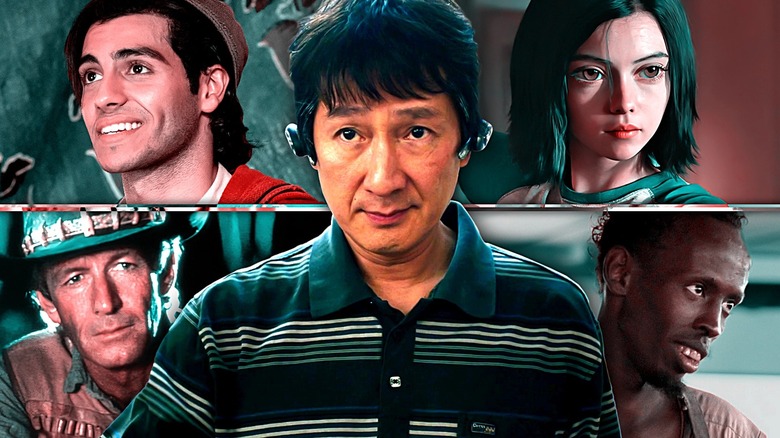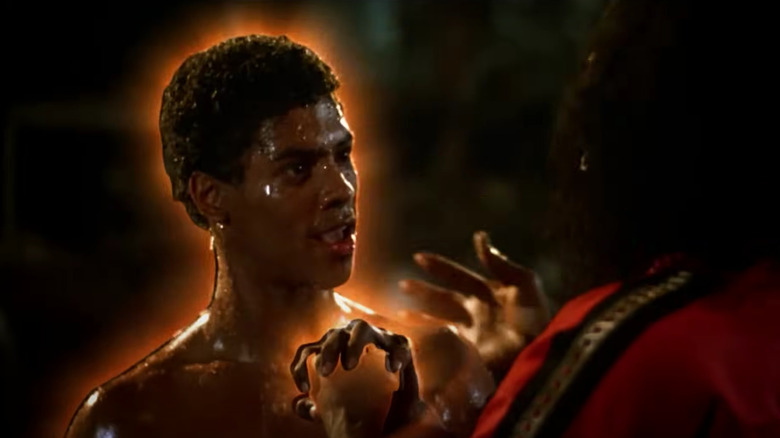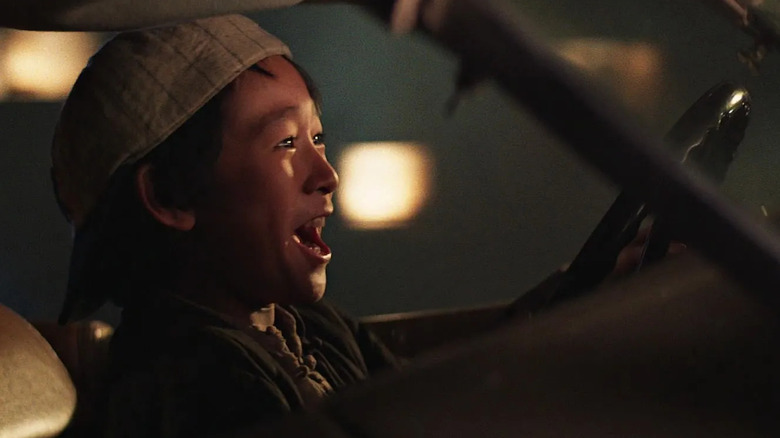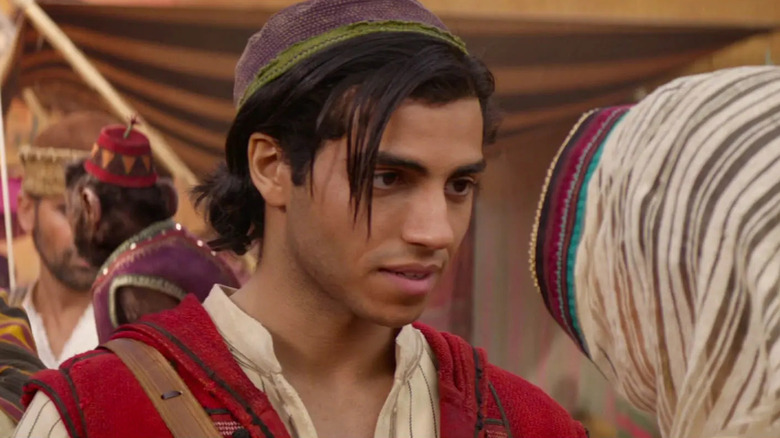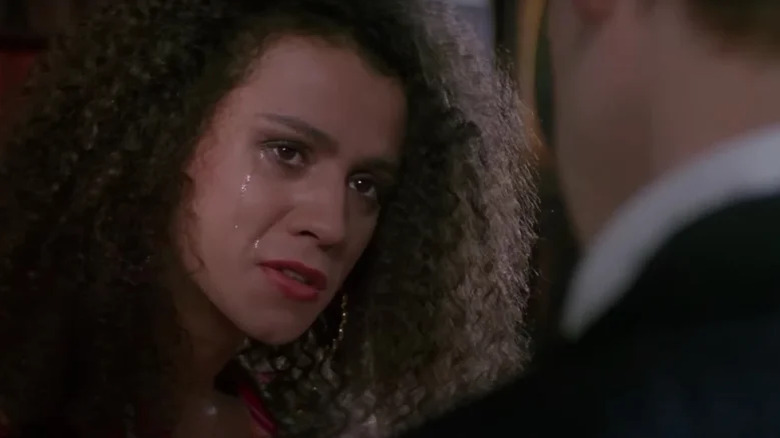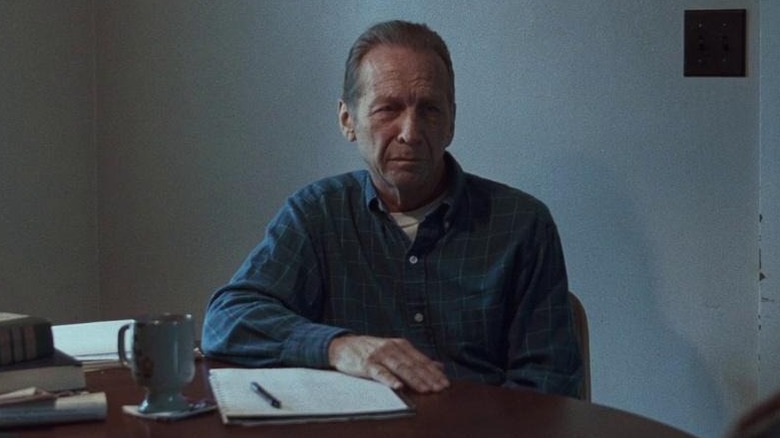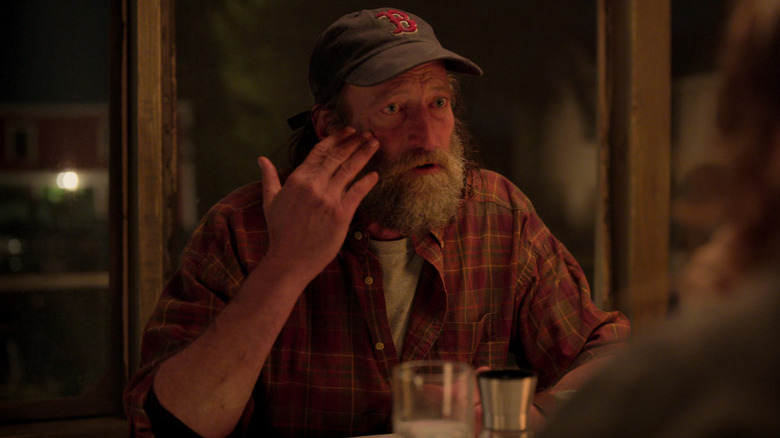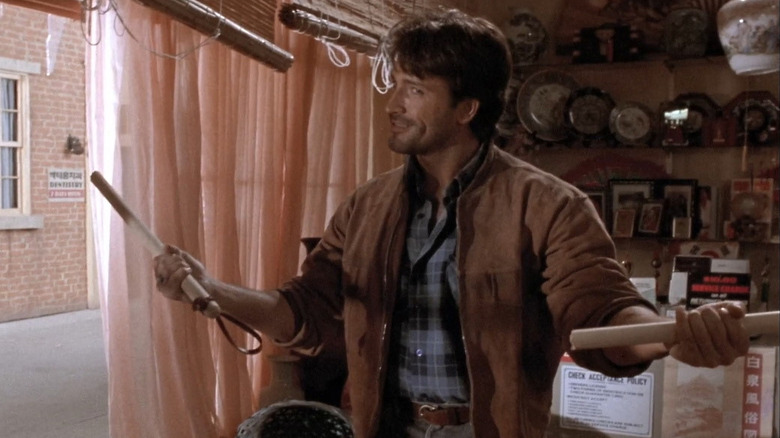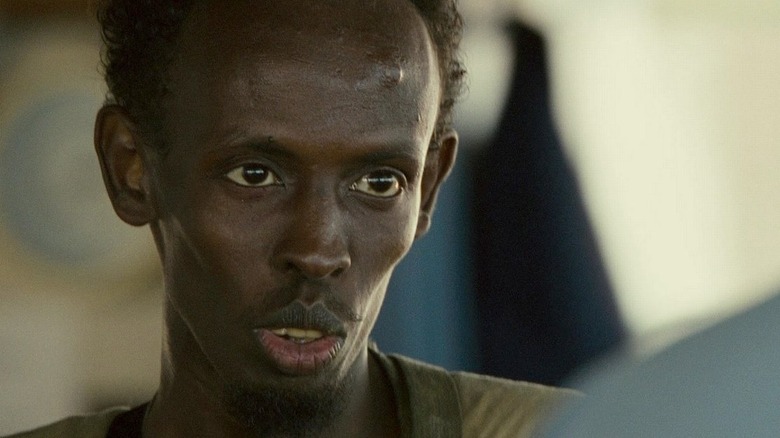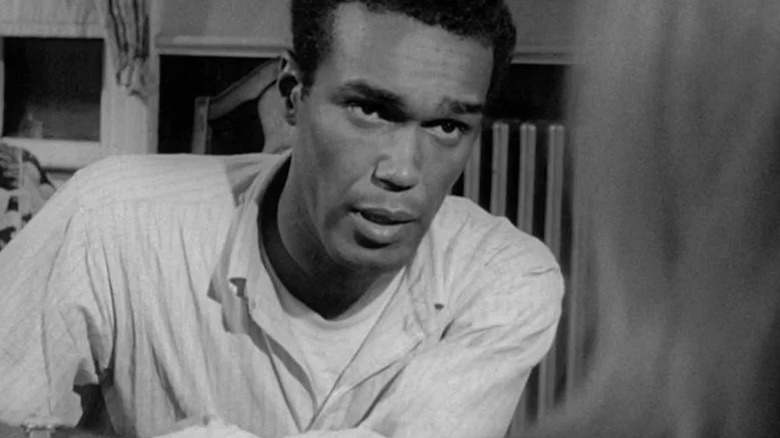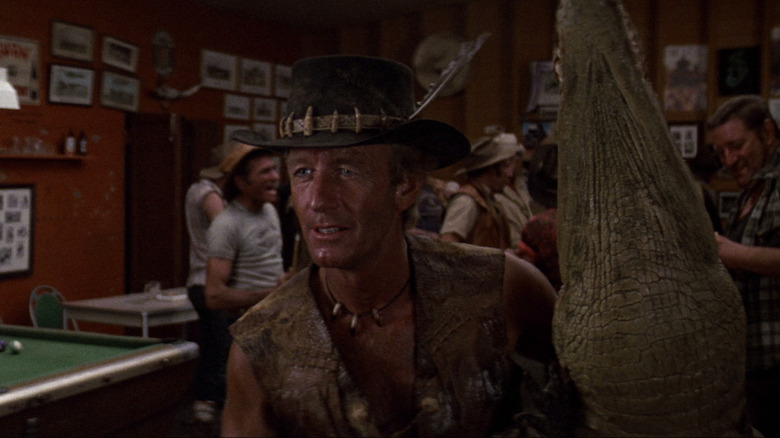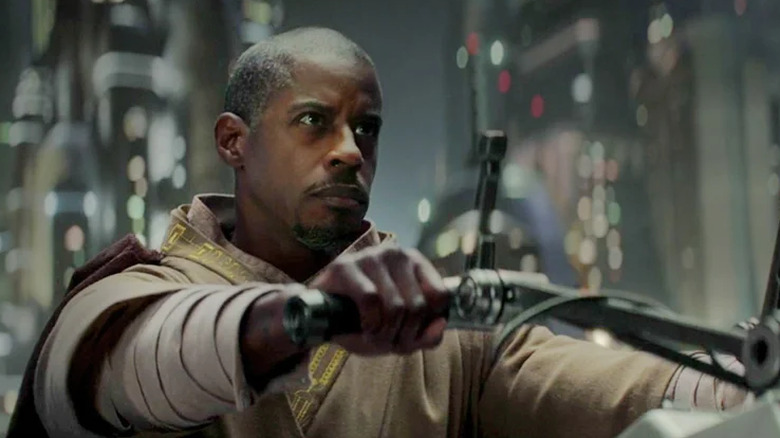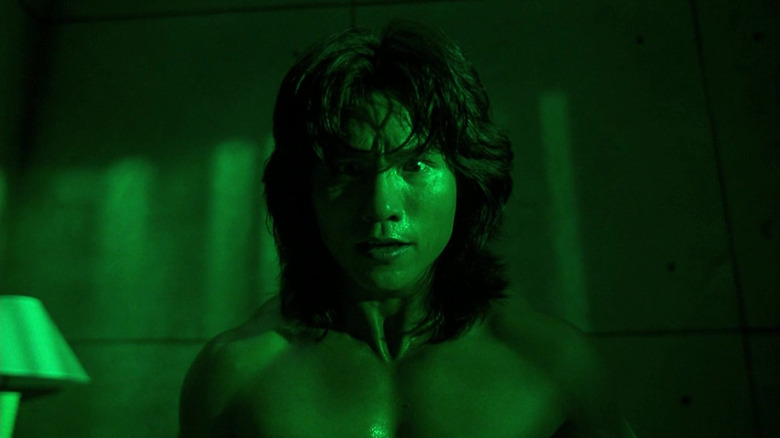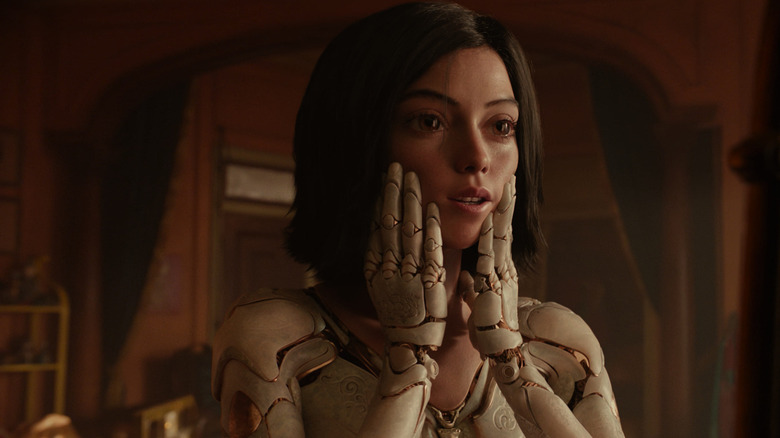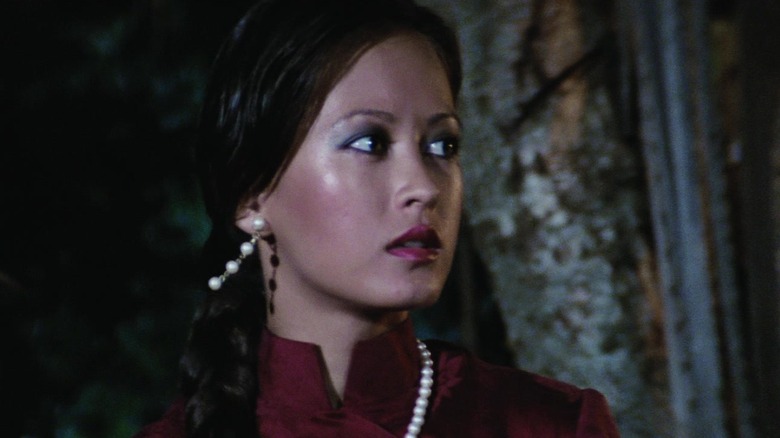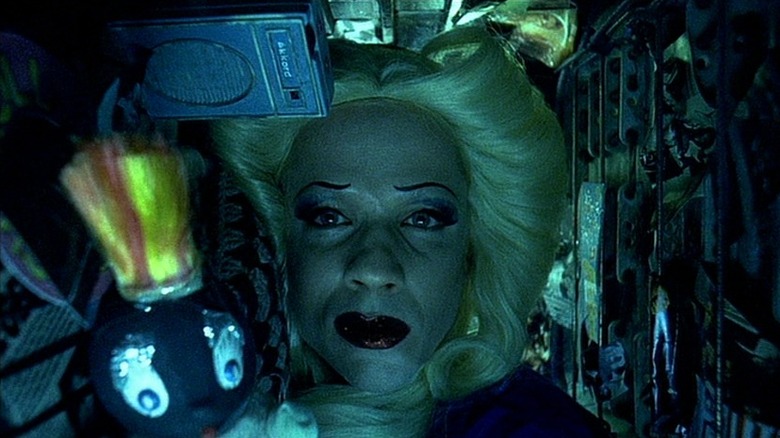15 Actors Who Struggled To Find Roles After Successful Movies
A great role can make a career... if there's a decent follow up. A good actor makes you believe they are the character, but sometimes, if they make you believe too well, it becomes impossible to see them as anyone else — and that turned out to be the case for many of the actors on this list. A significant chunk of them have even been nominated for and sometimes even won the Academy Award for Best Supporting Actor, only to find that the same energy couldn't be duplicated in other parts less perfectly tailored to their skills. Some struggled because of industrywide racial stereotypes limiting their opportunities, while others may have been limited in range to begin with and were incredibly lucky to find the one part that really worked.
A few of these "one-hit wonders" did not remain so forever and should serve as models of perseverance. Others milked their brief moment for everything it was worth. For whatever reason, here are 15 actors who were hugely successful in one or two movies, and then struggled to find equivalent acting work thereafter.
Taimak
"Berry Gordy's The Last Dragon" might be the most 1985 movie of 1985, combining martial arts, Blaxploitation, and MTV music video culture. It's all about a promising young martial arts student in Harlem named Bruce Leroy, who yearns to attain the highest level of power and discipline that will literally cause his body to glow. He behaves like he's Chinese, which comes off weirdly innocent considering it's cultural appropriation. As in many '80s action movies, the role went to a real martial artist rather than an actor — the solo-monikered Taimak, who had never acted before.
The final performance comes across remarkably uncynical, with Taimak's Leroy coming off as both totally naively nice and a seasoned ass-kicker. It took a lot of work to get there, apparently. Though Gordy hand-picked Taimak to star in the movie, on the most recent Blu-ray extras, he complains that he and multiple acting coaches had to work with the star around the clock to get him where he needed to be. Perhaps unsurprisingly, Taimak hasn't had a major role since, though he worked as music video choreographer and continued to do martial arts and stunts.
Ke Huy Quan
For kids of the '80s, Indiana Jones' sidekick Short Round was a hero, getting to do all the cool stuff like freeing prisoners and performing stunts without any of the yucky grown-up romance. As Data in "The Goonies" shortly thereafter, he made being a tech nerd cool. After that came nothing for actor Ke Huy Quan, who played both roles. Kids may have loved him, but casting agents apparently didn't. Asian roles in Hollywood movies were in short supply.
Quan went to college and became a stunt choreographer under the tutelage of Hong Kong master Corey Yuen. Mostly retired from acting, he decided to try again after "Crazy Rich Asians" became a hit, right as the directing team known as Daniels were casting the multiversal Asian family action drama "Everything Everywhere All at Once" and wondering whatever happened to that guy who played Short Round. The rest is comeback history, as he won Best Supporting Actor at the Oscars. All those kids who grew up loving his original characters are now in positions to usher in the Ke Huy Quan-naissance, and they have.
Mena Massoud
Disney's animated "Aladdin," while mostly highly acclaimed and well-received when it came out, received some pushback for anti-Arab stereotypes. When the time came to remake the movie in live-action, the company knew they had to do better in terms of diversity and actually cast actors who look like they hail from South or Middle Asia. (Agrabah is fictional, but it's somewhere in that general region.) Egyptian-Canadian Mena Massoud won out after a four-month casting call to find an actor who both looked the part, and could sing and handle the action sequences.
The movie made over a billion dollars worldwide, yet in the months afterwards, its star said he hadn't had a single audition. He seemed like he might be a good match for the "Star Wars" role of Ezra Bridger, an animated character who looked vaguely like him, yet he didn't get past the first stage of that process. Egypt, however, embraced him, as he starred in the film "Fi Ez El Dohr" there and later became an official ambassador for the preservation of spoken Egyptian Arabic. He has also hosted a vegan cooking show, but it's nothing yet on the scale of a potential "Aladdin" sequel, for which Massoud remains cautiously hopeful.
Jaye Davidson
Sometimes an actor is just so perfect for a particular role that they nail it hard to great critical acclaim but have trouble finding other roles because the niche was so specific. Such was the case for Jaye Davidson, who served as a living, breathing plot twist in Neil Jordan's "The Crying Game." Davidson's character Dil initially appears to be the cis female girlfriend of British soldier Jody (Forest Whitaker), but after the latter dies, and his former terrorist captor Fergus (Stephen Rea) falls for Dil after promising to protect her, he learns in an intimate moment that Dil has a penis. The natural assumption today would be that Dil is a trans woman; Jordan has said she was meant to be a female impersonator only.
Davidson scored one more major role, as the androgynous alien Egyptian god Ra — originally written as a human — in "Stargate." However, he didn't think he had much chance for longevity in major acting roles as a Black gay man, and he went into the fashion industry instead, finding more success as a model and designer.
Paul Raci
As the son of deaf parents, Paul Raci was perfectly cast in "Sound of Metal" as a deaf mentor to the newly hearing-impaired, specifically Riz Ahmed's drummer Ruben Stone. Delivering no-nonsense tough love in English and ASL, his character Joe also educates audiences on the debate within the deaf community about cochlear implants. Raci was chosen for his authenticity as a lifelong communicator between the deaf and the hearing, but that's a very specific niche. Despite an Oscar nomination for Best Supporting Actor — a common recurrence on this list! — significant roles didn't really come his way afterward. Ironically, Raci had turned down the role twice, both because he initially thought it should go to a deaf person, and he actually made more money as an ASL interpreter.
He made a bit of a comeback, finally, in 2024's Oscar-nominated "Sing Sing." Once again, he found himself in the role of a tough-love mentor, this time to prisoners in an acting program. It turns out he's great at that kind of role even when deafness isn't involved.
Troy Kotsur
One of the actual deaf actors who tried out for Paul Raci's role in "Sound of Metal," Troy Kotsur got his moment to shine two years later, as the father in 2021's "CODA." Born deaf and thus only fluent in sign language, he mostly parlayed his craft into lead roles in deaf theater productions but was perfect for his "CODA" role as Frank Rossi, a deaf fisherman who literally and figuratively can't appreciate his hearing daughter's love of singing. Kotsur won the Best Supporting Actor Oscar that had eluded Raci, but he has not appeared in a theatrical feature film since.
He does have some on the way, though, including the horror movie "Primate," the Maika Monroe crime thriller "In Cold Light," and the Netflix mini-series "Black Rabbit," starring Jason Bateman and Jude Law.
One of his most significant roles was under a mask. For "The Mandalorian," he was brought on as a consultant to create a new alien sign language for Tusken Raiders. When it was discovered that he was also an actor, he got to play one too.
Jeff Speakman
A black belt in Kenpo, Jeff Speakman was pushed hard as the next potential Jean-Claude Van Damme or Steven Seagal in his first movie as lead, 1991's "The Perfect Weapon." In a role that wasn't much of a stretch, Speakman played a Kenpo master named Jeff Sanders, who falls afoul of the Korean mob, giving him plenty of chances to fight. Surrounded by a solid supporting cast that included Mako, Cary-Hiroyuki Tagawa, James Hong, and Mariska Hargitay, Speakman gave a competent breakthrough performance in a time when action stars were chosen more for actual fighting ability than thespian skills.
Speakman followed it with "Street Knight," for Cannon films, and without big studio backing or the same caliber of costar, it tanked. Because he did have legitimate martial arts skills, Speakman was still able to find work in low-budget action movies, but most went direct-to-video and haven't been heard from again. These days, he runs his own chain of Kenpo schools teaching his own variant, dubbed Kenpo 5.0, which integrates more ground-based attacks.
Barkhad Abdi
American movies don't often feature Somali characters, but when they do, it can be a career jackpot for Somali actors. Barkhad Abdi, a refugee who sold phones in a Minneapolis mall for his brother, attended an open casting call, having not been an actor before. He and three others were chosen out of more than 700, and it was a good call, because Abdi more than holds the screen against Tom Hanks as "Captain Phillips." He was nominated for a Best Supporting Actor Oscar... and then went back to work selling phones at the mall.
He has acted again since then — every time a Somali role comes up, as in "A Girl From Mogadishu" and "The Pirates of Somalia," he's clearly top of the list. Abdi also notably had a small part in "Blade Runner 2049." Nothing's even come close to playing Tom Hanks' opponent, though, and with his distinctive face, he's not exactly a chameleon kind of actor who blends in. For his next movie, "Run," he'll be working with the notoriously unpopular director Uwe Boll, who's currently picking a stupid fight with Warner Bros.
Duane Jones
Duane Jones stars in one of the most famous horror movies of all time, yet his name is barely known. As Ben in George A. Romero's original "Night of the Living Dead," he's the sole survivor of a zombie attack, until, at the very end, he gets shot and killed by a posse who mistake him for one of the undead. It's a plot point that's widely viewed as a controversial, strong statement against racism, though Romero wrote it without having a Black actor necessarily in mind. Jones simply delivered the best audition and got the part. After being cast, he fought against any potential happier ending.
It was rare in 1968 for movies to feature heroic Black leads, and Jones didn't appear in another movie until 1973's vampire flick "Ganja & Hess." The '80s were kinder, as he appeared in the acclaimed drama "Losing Ground," the breakdance movie "Beat Street," and the horror films "Vampires" and "To Die For," the latter released posthumously following Jones' death in 1988.
Because "Night of the Living Dead" fell into public domain, it is frequently used in other horror movies when characters are shown watching TV. As such, Jones ultimately appears in far more movies than he ever actually made.
Paul Hogan
An Australian comedian who first broke through via multiple appearances on a talent show called "New Faces," Paul Hogan went on to have a successful sketch comedy TV show and broke through internationally in a series of comedic ads for Australian tourism and Foster's lager. Observing the popularity of his broad performances in these, he decided to write a screenplay about the most stereotypical Australian backwoodsman showing up in New York City. This, of course, was "Crocodile Dundee."
Hogan reprised the role in a more action-oriented sequel, but in a terrible-in-hindsight move, turned down the lead role in "Ghost" to make the comedy "Almost an Angel" instead. Rejecting many action movies that came his way, he stuck to comedies, making "Lightning Jack" and "Flipper," followed by a series of Subaru commercials, before returning to his signature role in the far less popular "Crocodile Dundee in Los Angeles." A return to stand-up and a lengthy tax evasion battle came later, followed by a Super Bowl commercial and the movie "The Very Excellent Mr. Dundee," both of which spoofed possible "Dundee" reboot ideas.
Ahmed Best
Hired for his physicality in the stage show "Stomp," Ahmed Best signed on to "The Phantom Menace," the first "Star Wars" movie in 16 years, to provide onscreen reference for the first all-CG major movie character. Using a funny voice he created to entertain his cousins, he followed director George Lucas' instructions to try to act like a classic silent comedian. When audiences and critics caught a glimpse of the character and heard him talking, all hell broke loose. Jar Jar Binks was widely accused of being not just unfunny but racist, a cross between a caricatured Jamaican and a minstrel show. He was minimized in the sequels,and Best became so depressed he considered suicide. With nobody in a hurry to hire Jar Jar, he stuck to voice-acting and low-budget comedy and exploitation films.
In time, as a new generation of "Star Wars" fans grew up, the tide turned for Jar Jar. Best returned to the role for some animated specials, but he also found redemption in the franchise as Jedi Master Kelleran Beq, who saves Grogu from the Jedi Temple massacre in a flashback episode of "The Mandalorian" (above). Retroactively, he was a hero of the prequel era all along.
Robin Shou
To the extent that "Mortal Kombat," the video game and the Paul W.S. Anderson movie, resembles "Enter the Dragon," the character of Liu Kang is its Bruce Lee, a master martial artist from a heroic lineage, sent by his fellow shaolin to defeat the evil tournament host Shang Tsung. Robin Shou was a wushu champion and Hong Kong stuntman who had just quit his hometown industry, and looking to transition into Hollywood. He initially turned down the Liu Kang role because he thought it would be an Asian stereotype, changing his mind when he discovered he'd be the main hero. An unknown actor stateside, he nonetheless beat out bigger names like Jason Scott Lee and Ernie Reyes Jr. He impressed fans in the role, and he was one of the few actors not recast for the lackluster sequel.
Despite being able to bilingually act and impressively fight, the only other major role he scored thereafter was in the Chris Farley comedy "Beverly Hills Ninja." Most of his movies since then have been direct-to-video, but he has also made appearances in subsequent film adaptations of fighting games, including "DOA: Dead or Alive" and "Street Fighter: The Legend of Chun-Li."
Rosa Salazar
Rosa Salazar isn't always recognizable from her most famous role as the title character of "Alita: Battle Angel." That's because, in attempt to make her resemble a live-action manga character, she sported digitally enlarged eyes as well as a significantly CG-enhanced body. That can prove difficult for folks to wrap their head around, when they realize that Rosa doesn't necessarily look like Alita.
Directed by Robert Rodriguez and produced by James Cameron, "Alita" was enough of a hit at $405 million worldwide to make fans demand a sequel, but it wasn't enough to justify the massive budget that would be needed, despite late producer Jon Landau's teases. On the strength of its success, Salazar landed a lead in the Netflix miniseries "Brand New Cherry Flavor," but since then, her biggest movie role has been in the mostly animated "Marcel the Shell With Shoes on." She was supposed to enter the Marvel Cinematic Universe as Diamondback in "Captain America: Brave New World," but her scenes were ultimately deleted. Thankfully, she's still enjoyed more work on the small screen.
Julia Nickson
Julia Nickson was the female lead in the second-highest grossing (domestic) movie of 1985, "Rambo: First Blood Part II." As Sylvester Stallone's love interest and Vietnamese intelligence contact Co Bao, she helps John Rambo infiltrate communist territory, gets a love scene with him, and then dies before he can deliver on his promise to take her to America. The character, like much of the movie, is embarrassing by today's standards, with the Singaporean-American actress having to speak in broken English to play Vietnamese. Plus, Rambo's not exactly a romantic character, with action movie fans more anxious to see him blow stuff up than fall in love.
Nickson didn't get much of a rub from the film's success, appearing afterward in mostly forgettable films like the 1988 comedy "Glitch!" She fared better on TV, appearing on episodes of shows like "Star Trek: Deep Space Nine," "Babylon 5," and "SeaQuest DSV," in which she would have become a regular cast member had the show not been canceled.
Nickson officially retired from acting in 2025 for unspecified "personal reasons."
John Cameron Mitchell
It's quite the success story to cowrite and star in your own hit stage musical, then do the same for its film adaptation. Like many others on this list, however, John Cameron Mitchell created such a specific persona for himself that it proved a tough act to follow. "Hedwig and the Angry Inch" saw the Texas-born Mitchell portraying an East German trans woman musician whose songs get plagiarized by her ex-lover and protegee. The rock musical featured animated sequences in the film version, while the stage show played out like an aggressive concert. A film and a central role that distinctive may have typecast Mitchell as un-typecastable, as there is no other role quite like Hedwig. Mitchell had various small roles prior, as characters with names like "Man in Audience" or "Man With Fruit."
Since Hedwig, Mitchell still sometimes gets roles, most notably as Hal in Netflix's adaptation of "The Sandman," and Andy Warhol on HBO's "Vinyl." No lead roles, though, which may be one reason why he has prioritized directing, with such movies as the explicit sex film "Shortbus" and the Nicole Kidman drama "Rabbit Hole" under his belt.
